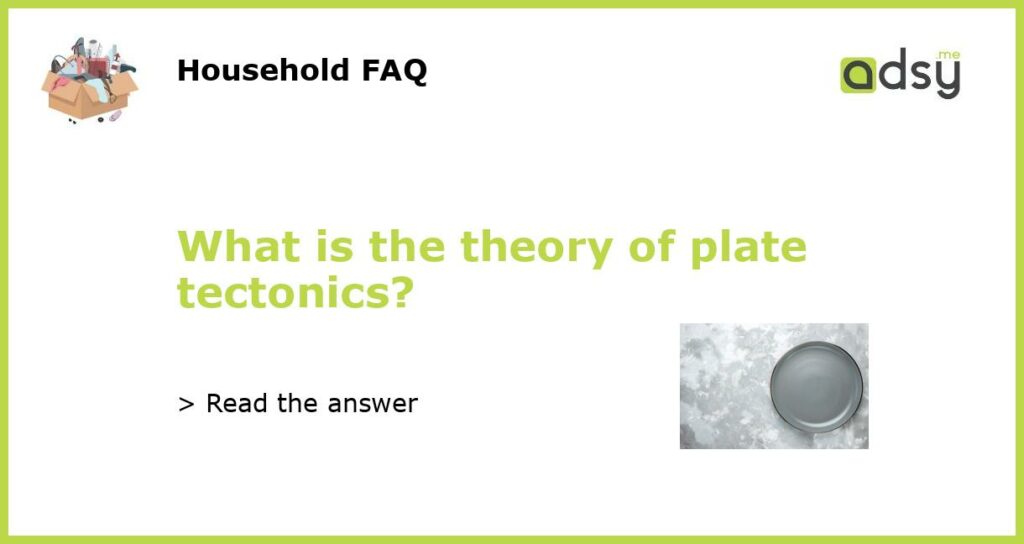Understanding the Theory of Plate Tectonics
The theory of plate tectonics is a widely accepted scientific explanation for the movement of the earth’s lithospheric plates. It helps to explain the formation of continents, mountains, earthquakes, and volcanic activity. This theory revolutionized the field of geology and our understanding of the Earth’s dynamic processes. Let’s dive deeper into the theory of plate tectonics and explore its key components.
The Basics of Plate Tectonics
The theory of plate tectonics suggests that the Earth’s lithosphere is divided into several large and small plates that float on the semi-fluid asthenosphere beneath. These plates are constantly moving, either colliding, sliding past each other, or spreading apart. The movement of these plates is driven by convection currents in the Earth’s mantle.
Plate boundaries are the zones where these lithospheric plates interact. There are three main types of plate boundaries: convergent, divergent, and transform. At convergent boundaries, plates collide, causing subduction (where one plate goes beneath the other) or mountain formation. At divergent boundaries, plates move apart, leading to the formation of new crust through seafloor spreading or rift valleys. Transform boundaries involve plates sliding past each other, resulting in earthquakes.
Evidence for Plate Tectonics
The theory of plate tectonics is supported by various lines of evidence. One such piece of evidence is the fit of the continents. When the continents are pieced together, they appear to fit like a jigsaw puzzle, suggesting that they were once connected. This idea, known as continental drift, was proposed by Alfred Wegener and laid the foundation for plate tectonics.
Another compelling evidence comes from the distribution of earthquakes and volcanoes. Most earthquakes and volcanoes are found along plate boundaries, indicating that they are closely related to plate movements. Additionally, the discovery of magnetic striping on the ocean floor provides evidence for seafloor spreading and the movement of plates.
The Importance of Plate Tectonics
The theory of plate tectonics is essential for a deep understanding of the Earth’s geological processes. It explains the formation of diverse geological features such as mountain ranges, island arcs, and oceanic trenches. It also helps geologists and seismologists predict and understand earthquakes and volcanic activity.
Plate tectonics plays a crucial role in the Earth’s climate and the distribution of species as well. For example, the movement of plates can lead to the formation of mountains, which affects wind patterns and precipitation, influencing climate. It can also create barriers or pathways for the dispersal of species, influencing their distribution and evolution.
Continued Research and Future Developments
While the theory of plate tectonics has provided a solid foundation for understanding the Earth’s dynamic processes, there is still much to be explored and discovered. Ongoing research is focused on understanding the driving forces behind plate movement, refining models of plate boundary interactions, and investigating the long-term evolution of continents and oceans.
Advances in technology, such as GPS and satellite imaging, have enabled scientists to measure plate movements with high precision. This data allows for better monitoring of seismic activity and improved earthquake and volcanic eruption predictions. It also aids in studying the effects of plate tectonics on climate change and sea level rise.
The theory of plate tectonics is a fundamental concept in understanding the Earth’s dynamic nature. It explains how continents shift, mountains form, and earthquakes and volcanic activity occur. The evidence supporting this theory is vast, ranging from the fit of continents to the distribution of earthquakes and the discovery of magnetic striping on the ocean floor. Further research and technological advancements continue to shape our understanding of plate tectonics and its broader implications for our planet.






